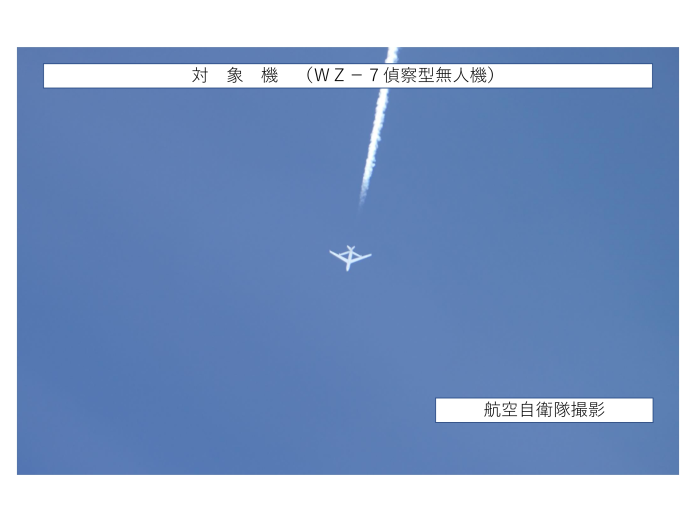On June 25th, the Japan Ministry of Defense Joint Staff released a statement saying a WZ-7 Unmanned Aerial Vehicle (UAV) flew around the East China Sea (ECS). Japan Air Self-Defense Force (JASDF) aircraft and other units intercepted the drone during the flight. The WZ-7’s flight comes after the ministry detected two intelligence collection assets around Japan since mid-June.
Unmanned Aerial Vehicle Flights in East China Sea
The WZ-7 UAV flew from either China’s Jiangsu or Shandong provinces, and then flew into the ECS. The drone began to fly on a southeast track parallel to Kyushu and completed an oblong track near the island after it deviated from the UAV’s original course. The UAV turned south, where it flew northwest of Amami-Oshima and reversed course before flying north on a similar flightpath. The WZ-7 completed another oblong track as it neared Kyushu Island before flying back to China. The JASDF launched jet aircraft, likely either F-15Js or F-2As, to intercept and monitor the WZ-7.
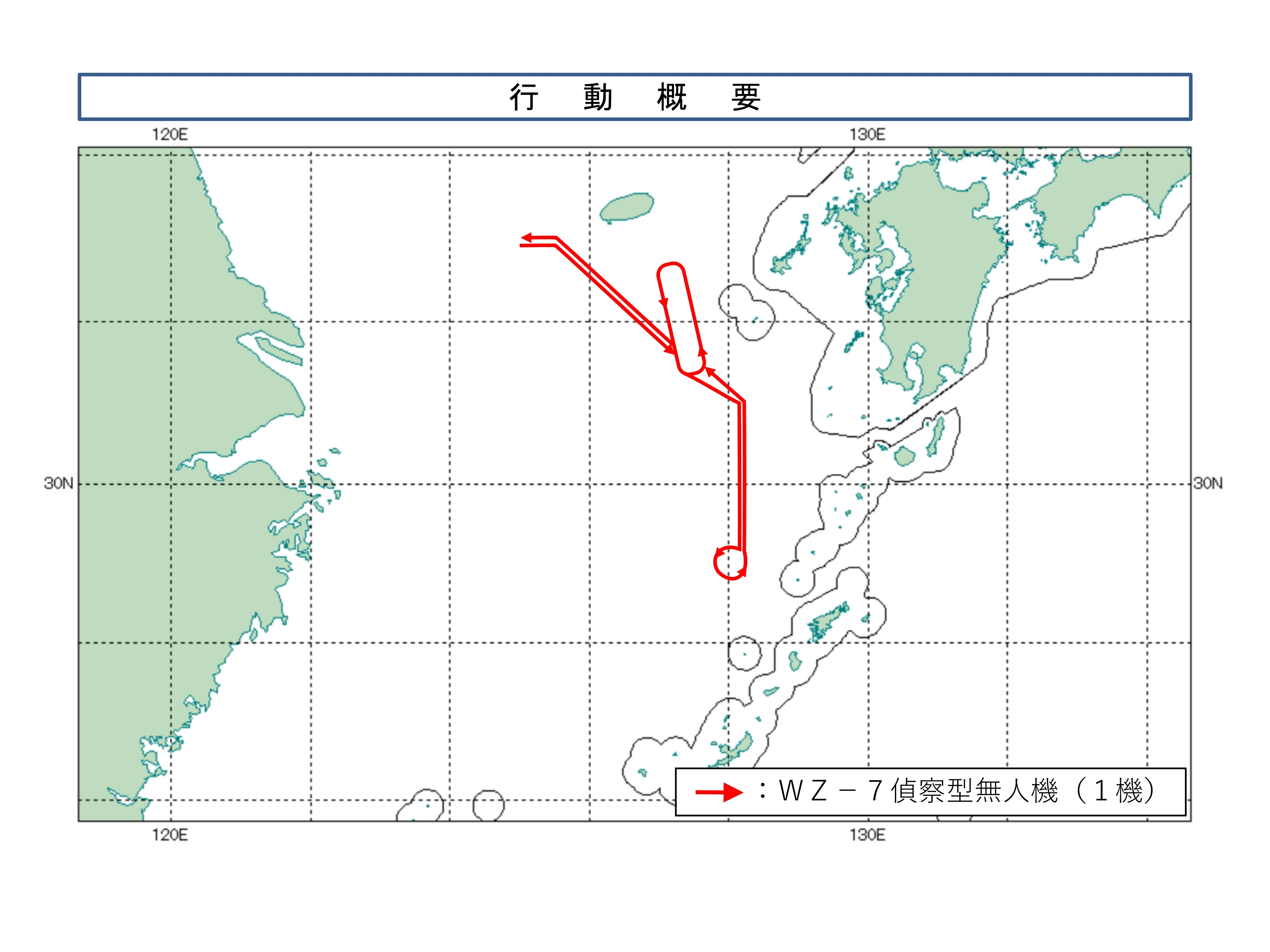
People’s Liberation Army Navy Vessel Movements Around Japan
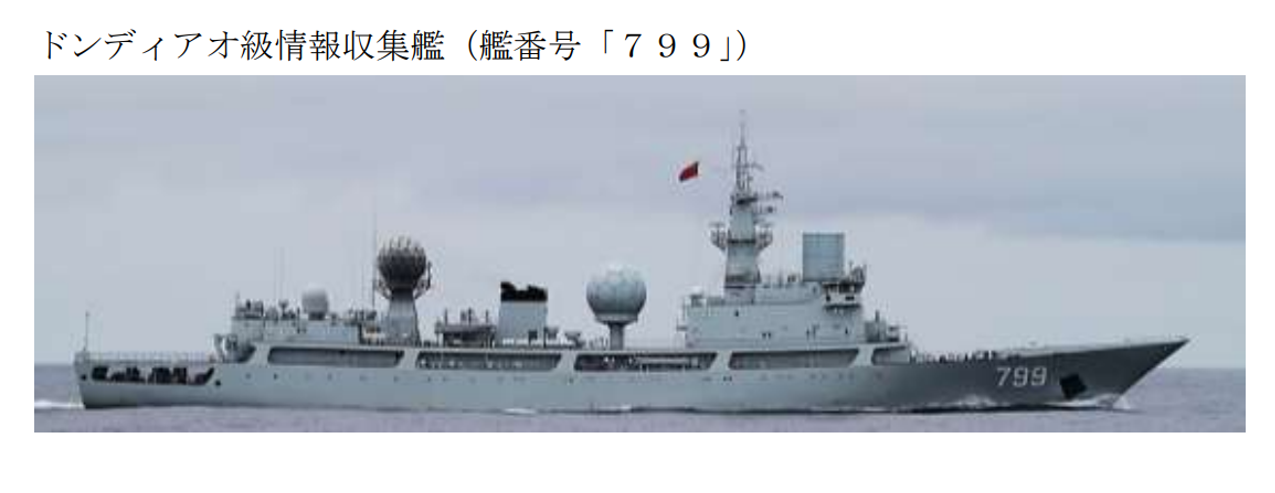
The Japan Maritime Self Defense Force (JMSDF) detected two People’s Liberation Army Navy (PLAN) intelligence collection vessels sailing around the country. On June 21st, the JMSDF detected one Dongdiao class/Type 815A vessel sailing northeastward, approximately 31 miles (50 kilometers) southwest of Tsushima Island, Nagasaki Prefecture. The vessel sailed through the Tsushima Strait and towards the Sea of Japan. The JSMDF deployed the JS Shirataka, a Hayabusa class missile boat, and a P-1 maritime patrol aircraft to gather intelligence and surveil the Type 815A.
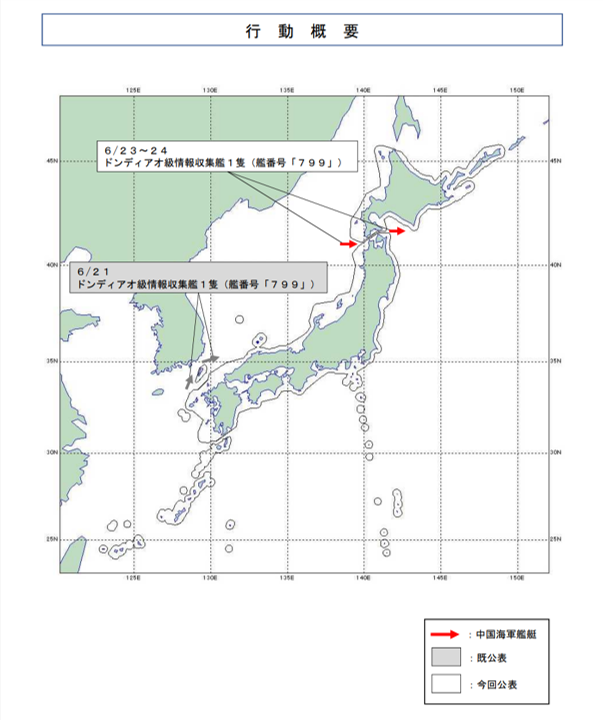
On June 23rd, the JMSDF observed the same Type 815A vessel near the coast of Hokkaido. The vessel was observed moving east about 31 miles (50 kilometers) south of Oshima Island, Hokkaido Prefecture. On June 24th, the Type 815A sailed eastward through the Tsugaru Strait and into the Pacific Ocean. The JMSDF sent a Hayabusa class missile boat, the JS Wakataka, and a P-3C maritime surveillance aircraft to monitor and collect intelligence on the vessel.
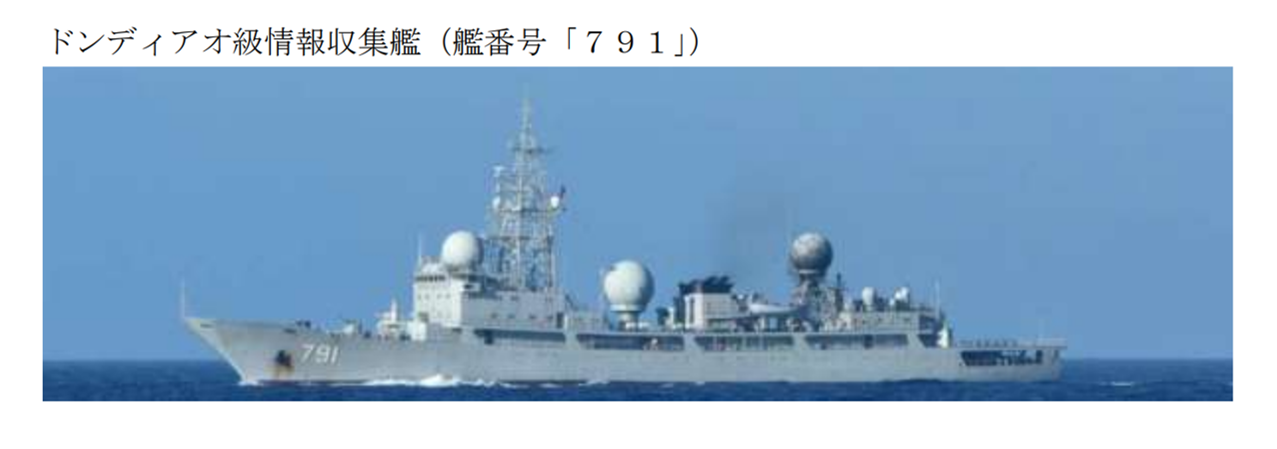
However, the JMSDF detected another PLAN intelligence collection vessel, a Type 815, on June 22nd. The vessel was moving northwest, approximately 68 miles (110 kilometers) northeast of Miyako Island, Okinawa Prefecture. The Type 815 moved northwest to the area between Okinawa and Miyako Islands and sailed towards the ECS. A Hirashima class minesweeper, the JS Yakushima, and a P-1 maritime surveillance aircraft monitored the vessel and collected intelligence.
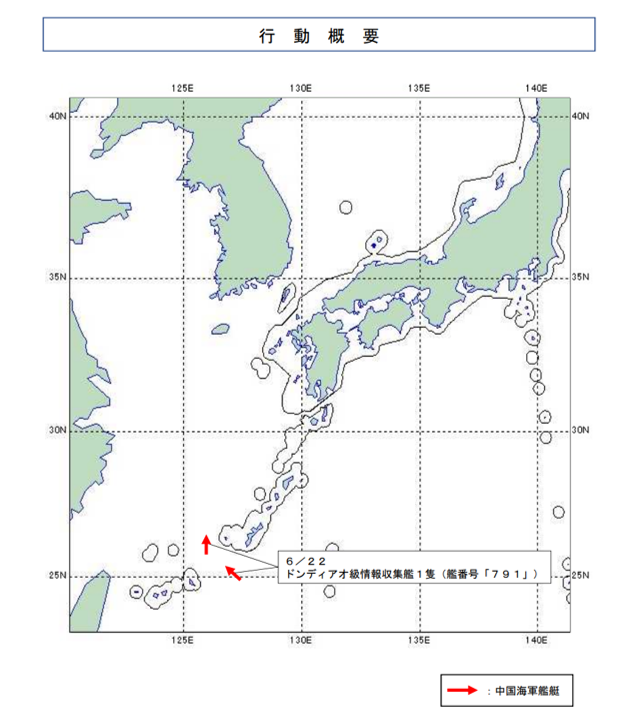
Recent Activity Points Continued Intelligence Collection Efforts By PLA
The Dongdiao class vessels and the WZ-7’s deployment allowed China to gather intelligence against various targets in southwestern and northern Japan. The UAV’s flight track points to the People’s Liberation Army’s (PLA) continued prioritization of intelligence collection in Japan’s Ryukyu Island Chain. The PLA wants to determine the full scope and current status of Japan’s plan to pivot from protecting the northern part of Japan to the southwestern part. Japan’s plan includes building bases on islands throughout the region. The WZ-7 would be used to collect intelligence, such as imagery and signals, that would provide them with insight on the progress Japan has made in redeploying forces to the region.
The Type 815’s path around Okinawa and Amami Islands also allows China to collect intelligence against targets in the area by collecting larger quantities of information for longer periods of time. China would prioritize Okinawa for increased intelligence collection efforts because of the Japan Self Defense Force and the U.S. military’s reorganization of units on the island. For example, Japan established a Surface-to-Ship regiment on the island in March as part of its plan to reorient its forces in the region.
However, the Type 815A’s path around eastern and northern Japan indicates that China wants to collect intelligence on targets to fulfill its intelligence requirements. The chief intelligence requirement would be to determine if Japan is reorganizing forces in these regions. The vessel would be well suited for collecting at these sites because of the increased endurance and standoff range of its sensors compared to UAVs. Furthermore, the vessel also allows China to collect intelligence to potentially share with Russia and North Korea.

